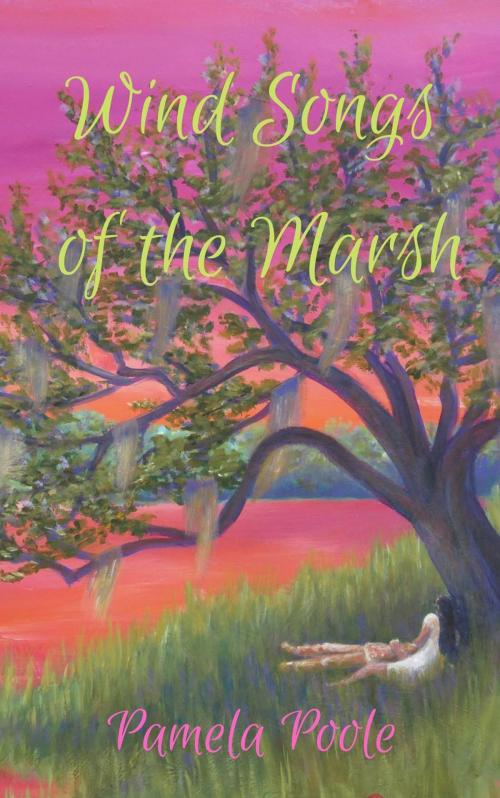The Wind Songs of the Marsh
Painter Place Saga Legend 1
Fiction & Literature, Native American & Aboriginal, Religious| Author: | Pamela Poole | ISBN: | 9781386841326 |
| Publisher: | Southern Sky Publishing | Publication: | October 9, 2017 |
| Imprint: | Language: | English |
| Author: | Pamela Poole |
| ISBN: | 9781386841326 |
| Publisher: | Southern Sky Publishing |
| Publication: | October 9, 2017 |
| Imprint: | |
| Language: | English |
An Idyllic Island
Before Painter Place became inhabited, legends arose about the White Spirits that lived there.
Long ago, in a time so far past that the names of the people in this story have been forgotten, the Wind Songs came to sing on White Island. The enduring heart of the story remains, passed along from generation to generation as a legend. The color white was the Indian symbol for "south," and it denoted peace and happiness. They believed the White Spirits lived in the south, and that the island was an idyllic place.
Who will brave the island for a greater good?
The chief of the local Indian tribe chose a special group to go to the island to hunt and prepare for the tribe's survival over the winter. Among them were his two daughters, whose beauty and intelligence were legendary among the tribes along the coast. They are among those whose names are forgotten, but over time, they came to be called South Wind and North Wind.
South Wind sang often, composing new music in her head as she did chores. She found ways to add beauty to mundane things, even in how she arranged food she served. Her sister, North Wind, was cool and distant, the quiet one, and she was very efficient in everything she accomplished. She wasted no time in fanciful pursuits, making every minute count in a productive way.
Two strong warriors helped win the battle for the right to hunt on White Island, and these young hunter warriors came to be called East Wind and West Wind. East Wind had a bent toward special creativity in his thinking, solving problems in unusual ways and appreciating beautiful things by observing them closely. He had a generous smile and his eyes alive with interest. West Wind didn't smile often, and when he did, it was as fleeting on his face as a rabbit he'd startled when hunting. He was efficient, striving to be the best at everything that made a man a warrior and a provider. West Wind was the better man by most of the tribe's standards.
Comrades and rivals
West Wind was in love with South Wind, and had long hoped to be the man her father would select for her. He was the most deserving among all rivals. But he knew her heart as she looked at East Wind, and he knew East Wind's heart was hers. Could his loyalty and honor overcome his disappointment?
Who can escape the White Wing and the Wind Songs?
At the time of this story, some still lived who claimed to have seen the spirits on the island. Some claimed to have heard their songs, and everyone knew that once people heard the spirits sing, they were never the same. What change would come over the hunting party once they'd seen the White Wing and heard the Wind Songs?
An Idyllic Island
Before Painter Place became inhabited, legends arose about the White Spirits that lived there.
Long ago, in a time so far past that the names of the people in this story have been forgotten, the Wind Songs came to sing on White Island. The enduring heart of the story remains, passed along from generation to generation as a legend. The color white was the Indian symbol for "south," and it denoted peace and happiness. They believed the White Spirits lived in the south, and that the island was an idyllic place.
Who will brave the island for a greater good?
The chief of the local Indian tribe chose a special group to go to the island to hunt and prepare for the tribe's survival over the winter. Among them were his two daughters, whose beauty and intelligence were legendary among the tribes along the coast. They are among those whose names are forgotten, but over time, they came to be called South Wind and North Wind.
South Wind sang often, composing new music in her head as she did chores. She found ways to add beauty to mundane things, even in how she arranged food she served. Her sister, North Wind, was cool and distant, the quiet one, and she was very efficient in everything she accomplished. She wasted no time in fanciful pursuits, making every minute count in a productive way.
Two strong warriors helped win the battle for the right to hunt on White Island, and these young hunter warriors came to be called East Wind and West Wind. East Wind had a bent toward special creativity in his thinking, solving problems in unusual ways and appreciating beautiful things by observing them closely. He had a generous smile and his eyes alive with interest. West Wind didn't smile often, and when he did, it was as fleeting on his face as a rabbit he'd startled when hunting. He was efficient, striving to be the best at everything that made a man a warrior and a provider. West Wind was the better man by most of the tribe's standards.
Comrades and rivals
West Wind was in love with South Wind, and had long hoped to be the man her father would select for her. He was the most deserving among all rivals. But he knew her heart as she looked at East Wind, and he knew East Wind's heart was hers. Could his loyalty and honor overcome his disappointment?
Who can escape the White Wing and the Wind Songs?
At the time of this story, some still lived who claimed to have seen the spirits on the island. Some claimed to have heard their songs, and everyone knew that once people heard the spirits sing, they were never the same. What change would come over the hunting party once they'd seen the White Wing and heard the Wind Songs?















